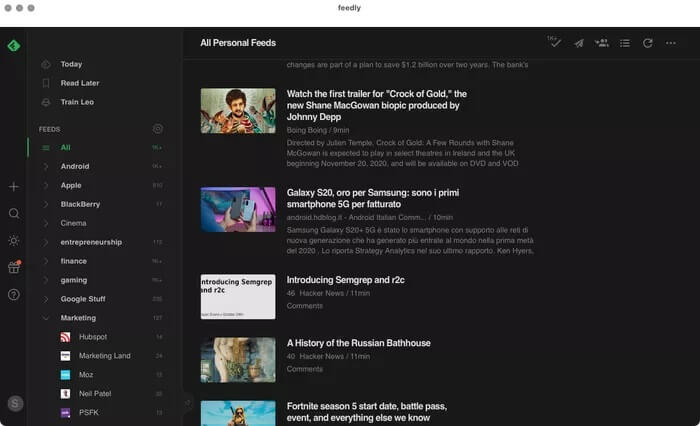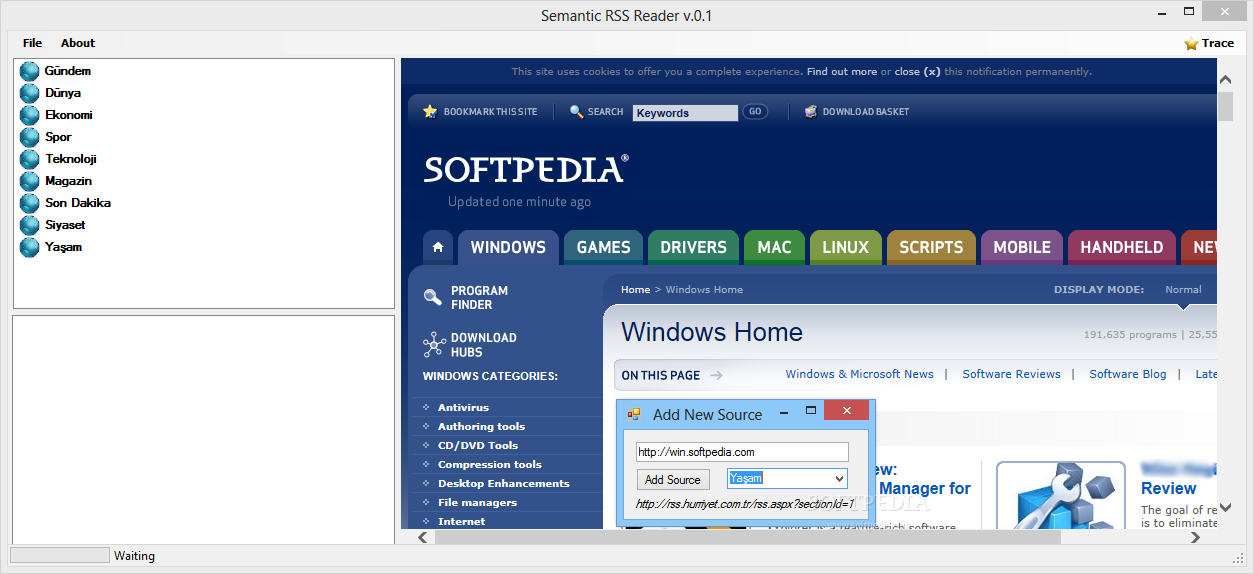
If a few days go by, I can open RSS and go through my carefully curated list of websites and get caught back up with the world.Ī long time ago, I used Reeder as my primary RSS application. That’s why RSS is such a great solution for me.

That only works if you go into Twitter much more frequently than I do. I’ll check in on Twitter, but I won’t be able to get my news from it. When I finish the job, I can then go back to the Internet.

I close my mail application, tell my phone service to take my calls, and I definitely don’t open Twitter. If I’m deep into writing a book or a legal client project.

Twitter is the social network that I participate in most and yet sometimes days go by where I don’t load the application. The reason I’ve stuck with RSS is the way in which I work. As social networks took off, a lot of my friends that were previously big RSS fans gave up on the technology and instead relied upon sources like Twitter and Facebook to get their news. It is a great way to read blogs and the backbone of podcast distribution. The MacSparky RSS, for example, gives RSS applications a list of all the articles I post here since you last checked int. RSS, or Really Simple Syndication, is a way to queue up and serve content from the internet. Having used Reeder 5 now for a few months, I’ve got a couple of tips:įor several years now, the trend among geeks has been to abandon the RSS format. It is still an attractive app with an opinionated design. Also, while Reeder doesn’t look as nice as Unread, it looks nice enough, and it has lots of features aimed at making the reading process easier. I thought that might be a deal-breaker, but the convenience of having everything in one app wins in my book. Unread has more options for color schemes and designs for the article view. If there is one trade-off, Reeder doesn’t display the articles as nicely as my previous RSS reader, Unread. Instead, the developer releases a new version every few years that you buy over, but it is still far less expensive than what I paid for subscriptions. A nice bonus is that Reeder is a one-time purchase.
#Macintosh rss reader mac#
It does all of this in one application, and in addition to the iPhone and iPad apps, there is also a Mac app. This newest version of Reeder does a good job of managing your feeds, displaying your articles, and giving you the ability to set them aside to read later. With this most recent version, the Reeder developer has included tools to view your RSS feeds (Reeder’s original purpose), manage feeds, and save articles for reading later using your iCloud storage.Īs someone who is normally skeptical of all-in-one applications, I like the idea of this update, but I wasn’t so sure about whether it would solve my problems. When Reeder released version 5, I decided to give it a try again. I used Reeder awhile back but moved to the above concoction of apps for many different reasons that I’ll refer to as “nerd-based app creep”.

In addition to being expensive, there is a certain amount of mental overhead that comes with managing data between three services that I would prefer to avoid. I currently use a Feed Wrangler account ($19 per year) to manage my feeds, Unread ($20 per year) to view my threads, and Instapaper ($30 per year) for read-it-later. Looking at my toolset for managing RSS, it’s getting expensive. I remain a believer in the RSS format and use it daily. We gave coverage to both of these topics last year on the Mac Power Users ( MPU 550: The World of RSS) ( MPU 554: Read-it-later Services). If you want to get content as it is created and shared and in a format more flexible than an email digest, however, you’ll need RSS.RSS and read-it-later services are near and dear to my heart. For some content and perhaps for your particular reading style, email digests may be a perfect fit and they’re still in use by many web sites-if you’re interested in getting daily email updated from How-To Geek, for example, you can subscribe to the daily email here. Material from the site gets packed up in a daily, weekly, or monthly digest, and fired off via email. Historically, web sites mimicked analog mailing lists in order to deliver content. RSS is like bookmarking in that you flag the site to be used in the future, but instead of sitting statically in your bookmark folder, your RSS “bookmark” is an active entity that is constantly updating itself with new content from the saved source. Normally you bookmark a site and you have to go look in your bookmarks to click on the site to get new content. One of the easiest ways to envision RSS is that is is like a living bookmark file. RSS may be one of the most underutilized but incredibly useful tools around.


 0 kommentar(er)
0 kommentar(er)
